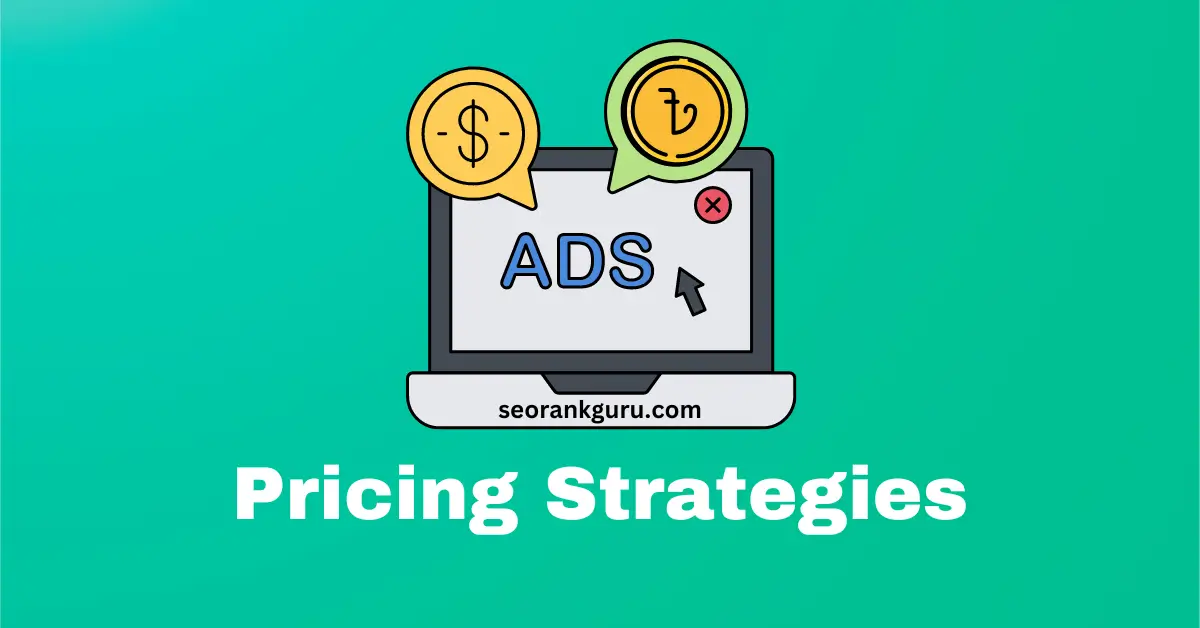Pricing strategies for social media advertising can be complex and intimidating for beginners. However, setting the right price for your product or service can be crucial for the success of your social media advertising campaigns.
In this beginner’s guide, we will cover the different factors to consider when determining the price of your product or service for advertising on social media.
We will also discuss various pricing strategies and tips for maximizing your return on investment (ROI) through social media advertising.
By understanding and implementing the right pricing strategies, you can effectively reach your target audience and achieve your marketing goals on social media.
Determine the cost of the product:
The first step in calculating the sale price of a product is to determine the cost of the product, including the cost of materials, labor, and any other expenses involved in producing and distributing the product. This will help you determine the minimum price at which you can sell the product and still make a profit.
Consider your target audience:
When defining the sale price of a product, it’s important to consider the demographics and preferences of your target audience. If your target audience is price-sensitive, you may need to price your product lower in order to make it more appealing. On the other hand, if your target audience is willing to pay a premium for high-quality products, you may be able to charge a higher price.
Evaluate your competition:
Another important factor to consider when defining the sale price of a product is the competition. Research the prices of similar products being sold by your competitors and try to position your product in a way that makes it competitive while still allowing you to make a profit.
Determine your advertising budget:
Your advertising budget will also play a role in determining the sale price of your product. If you have a limited budget, you may need to price your product lower in order to make it more appealing to potential customers and drive sales. On the other hand, if you have a larger budget, you may be able to price your product higher and still achieve a good ROI.
Analyze your customer lifetime value:
The customer lifetime value (CLV) is the total amount of money that a customer is expected to spend on your product or service over the course of their relationship with your business. Calculating CLV can help you determine the maximum price you can charge for your product and still achieve a good ROI.
Test different price points:
Once you’ve considered all of these factors, it’s a good idea to test different price points to see which one yields the best results. You can do this by creating multiple Facebook ad campaigns targeting different segments of your audience and testing different sale prices. This will help you determine the optimal price for your product and maximize your ROI.
Here are some additional steps you can follow when calculating the sale price of a product to promote on Facebook in order to maximize ROI:
Calculate your advertising cost per click (CPC):
The advertising cost per click (CPC) is the amount you pay each time someone clicks on your Facebook ad. To calculate your CPC, divide your advertising budget by the number of clicks your ad receives. For example, if your advertising budget is $500 and your ad receives 1000 clicks, your CPC is $0.50.
Calculate your conversion rate:
The conversion rate is the percentage of people who click on your ad and make a purchase. To calculate your conversion rate, divide the number of conversions (sales) by the number of clicks and multiply by 100. For example, if your ad receives 1000 clicks and results in 50 sales, your conversion rate is 5%.
Calculate your return on ad spend (ROAS):
The return on ad spend (ROAS) is the ratio of the revenue generated from your ad campaign to the cost of the campaign. To calculate your ROAS, divide your revenue by your ad spend. For example, if your ad campaign generates $1000 in revenue and costs $500, your ROAS is 2 (1000/500 = 2).
Determine your profit margin:
The profit margin is the amount of profit you make on each sale after all expenses have been taken into account. To determine your profit margin, subtract your costs from your sale price and divide the result by the sale price. For example, if your product costs $10 to produce and you sell it for $20, your profit margin is 50% (10/20 = 0.5).
Adjust your sale price based on your ROAS and profit margin:
Once you have calculated your ROAS and profit margin, you can adjust your sale price accordingly in order to maximize your ROI. If your ROAS is lower than you would like, you may need to lower your sale price in order to increase your conversion rate and generate more revenue. On the other hand, if your profit margin is too low, you may need to raise your sale price in order to make a profit.
By following these steps and adjusting your sale price based on your ROAS and profit margin, you can effectively calculate the optimal sale price for your product to promote on Facebook and maximize your return on investment.
In summary, there are several factors to consider when defining the sale price of a product for Facebook advertising, including the cost of the product, the preferences and demographics of your target audience, the prices of similar products being sold by your competitors, your advertising budget, and the customer lifetime value of your product. By taking these factors into account and testing different price points, you can determine the optimal price for your product and maximize your return on investment.


